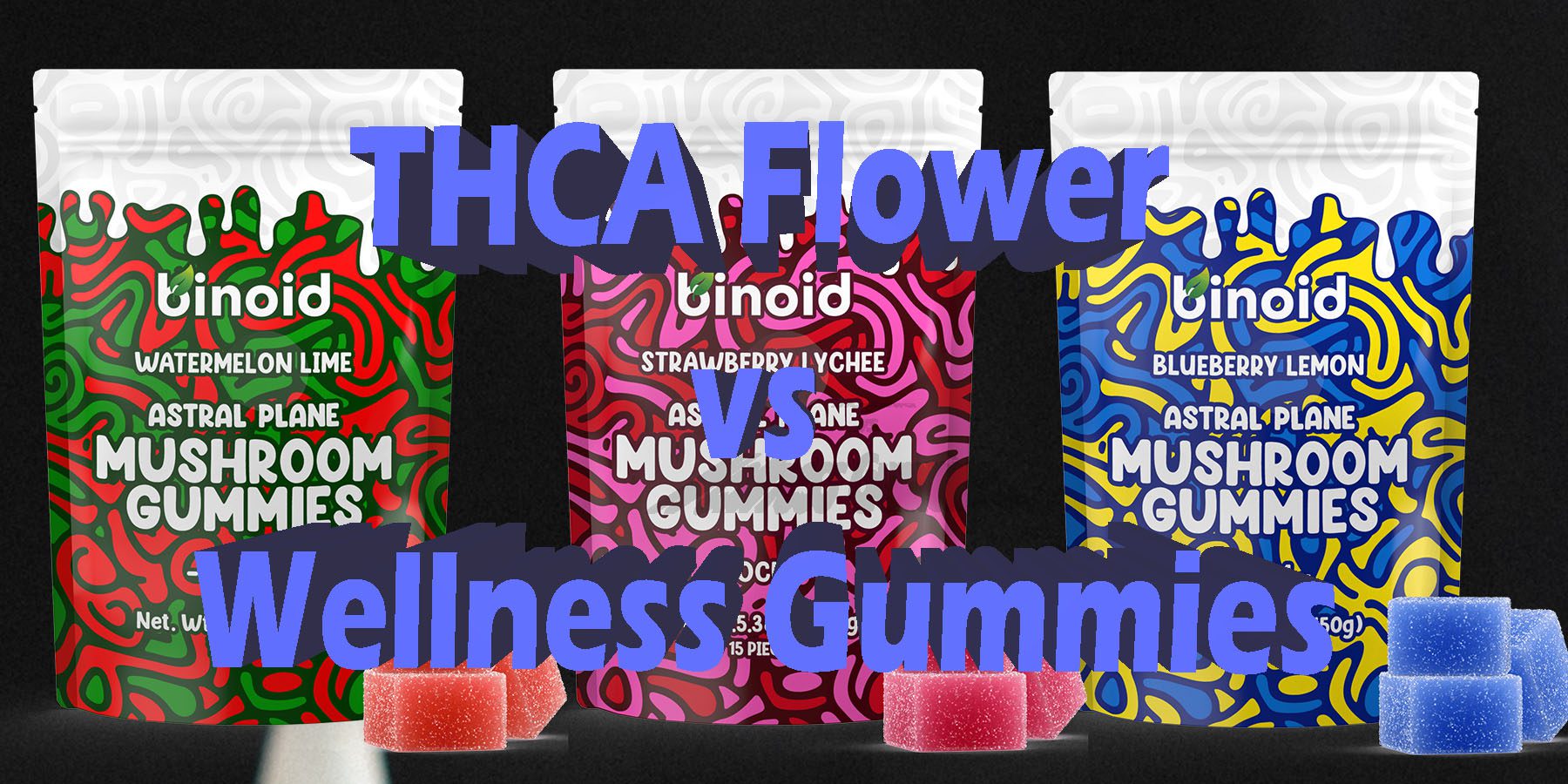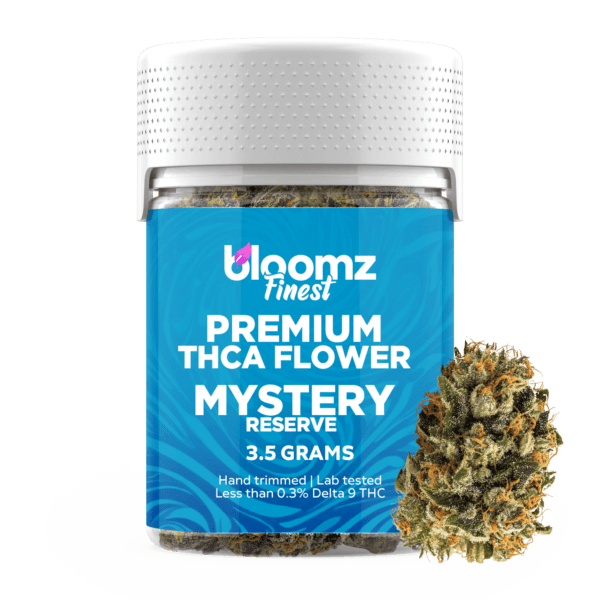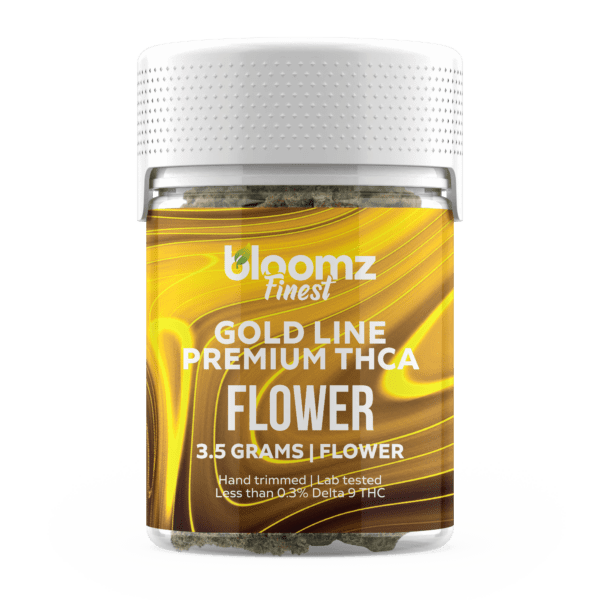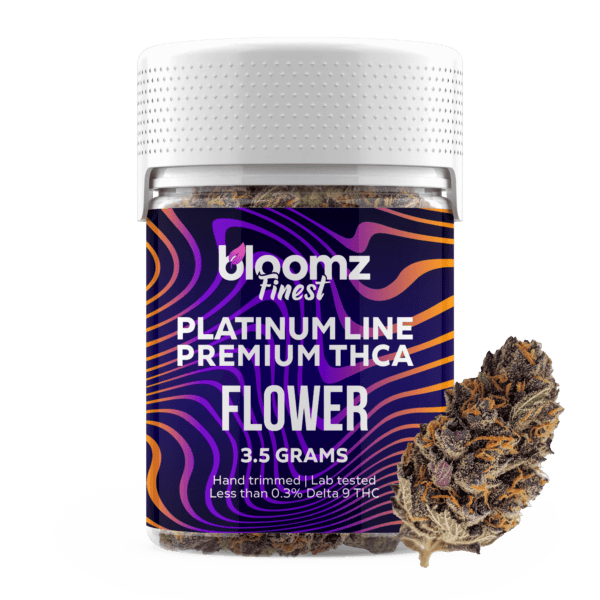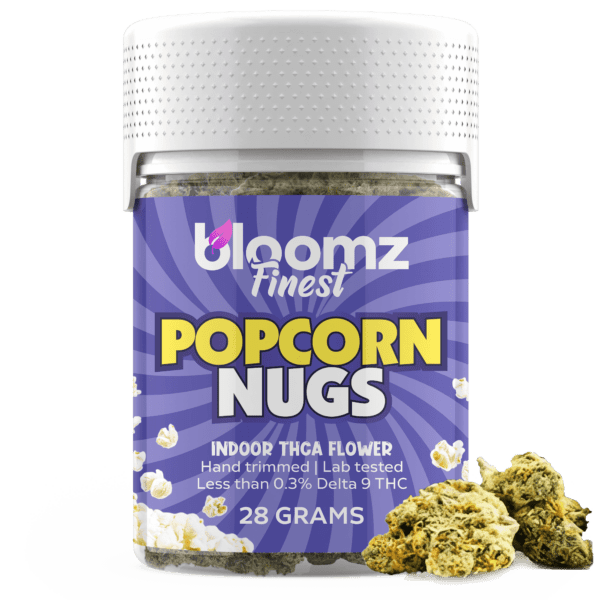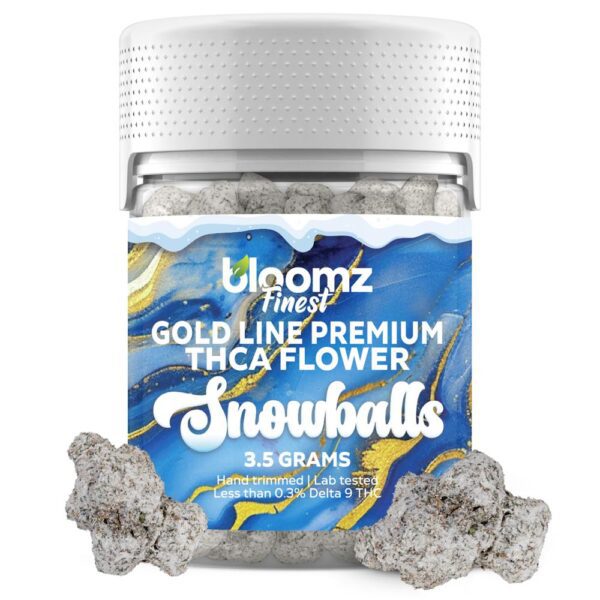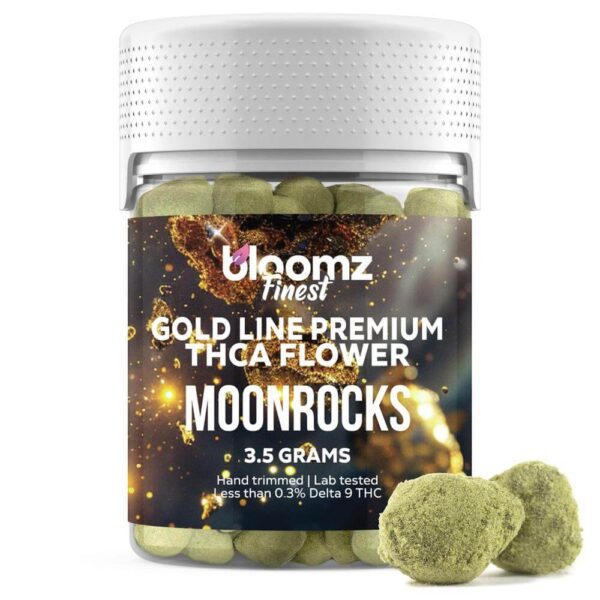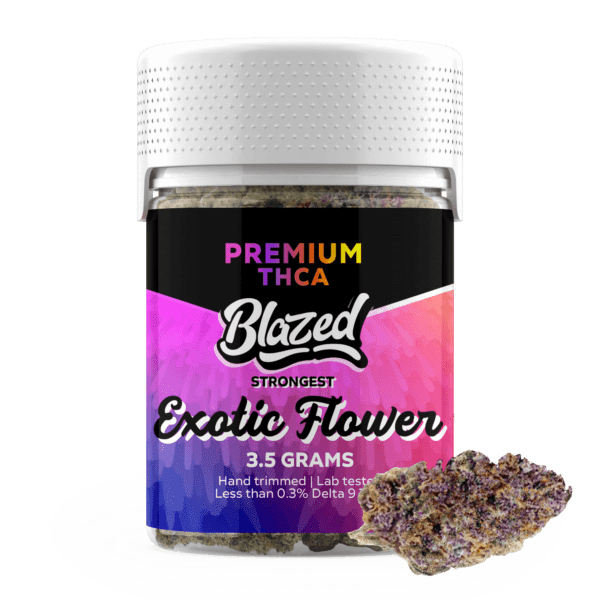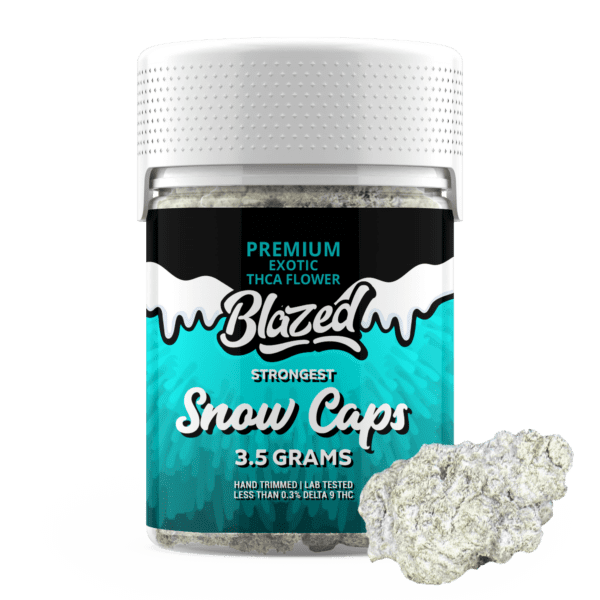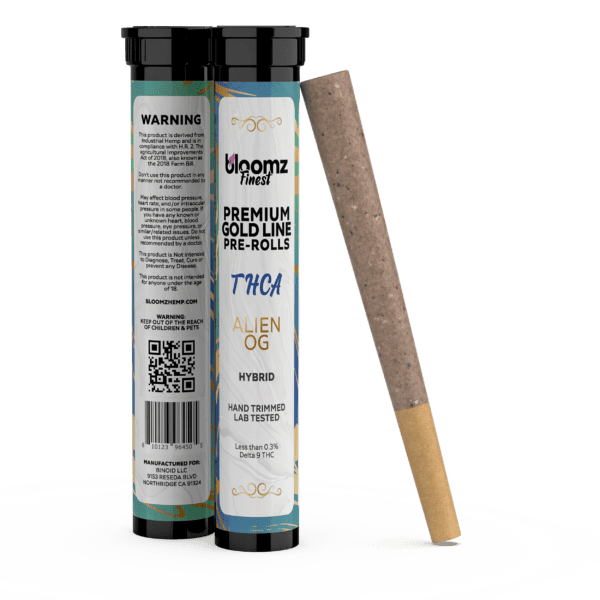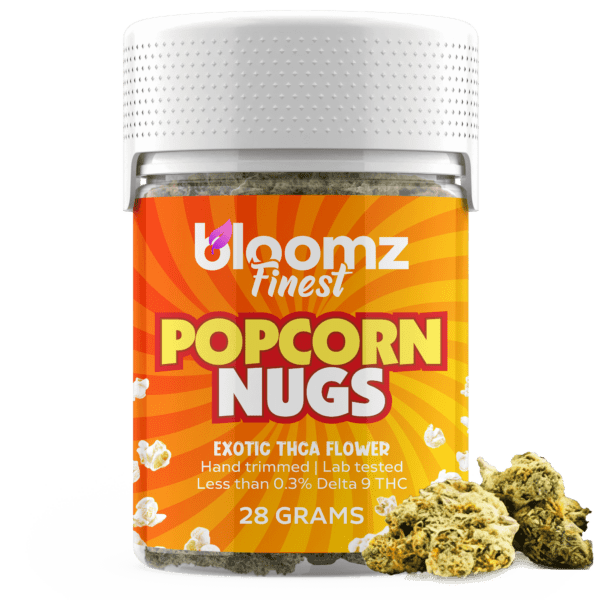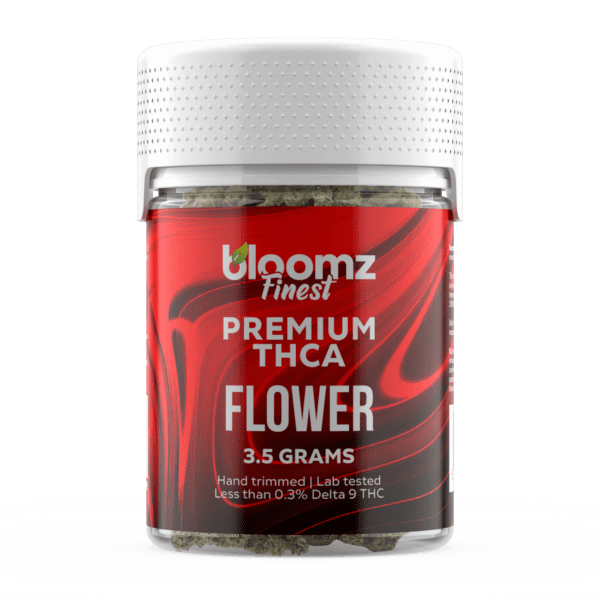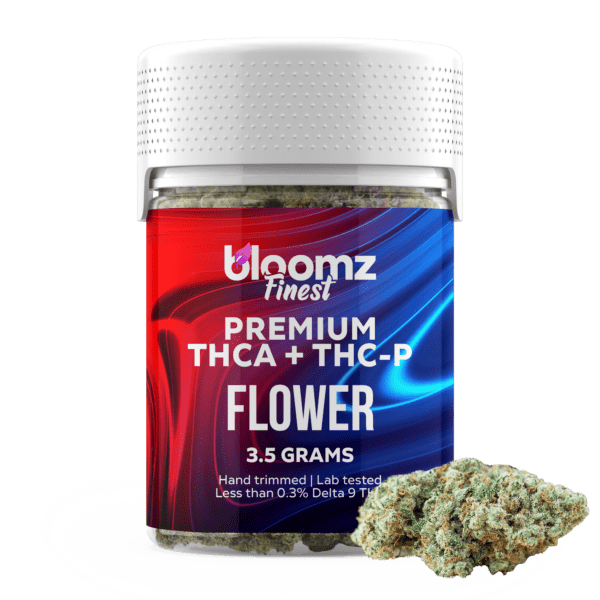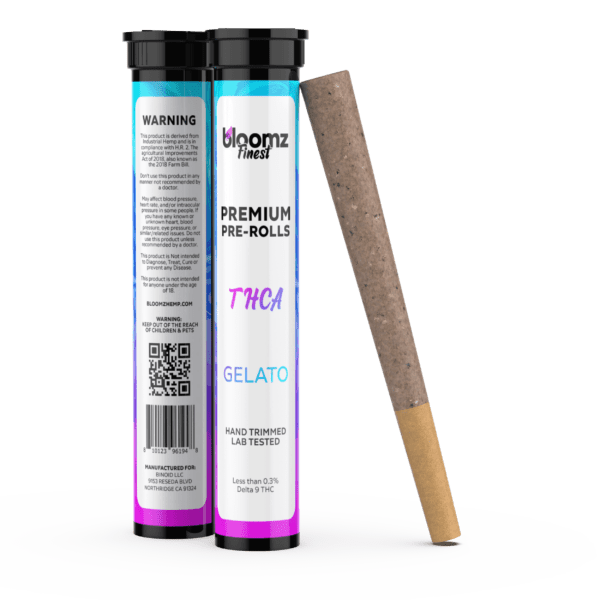The modern marketplace for wellness and personal enjoyment is a vast, vibrant, and ever-expanding universe of choices. Navigating this landscape can feel like standing at a crossroads where two distinct paths diverge, each promising a unique journey. On one path lies the earthy, aromatic allure of nature in its most direct form, a connection to something ancient and elemental. On the other path, a marvel of modern innovation beckons, offering precision, convenience, and delightful flavors wrapped in a neat, accessible package.
This is the fundamental choice that presents itself when comparing the raw, crystalline beauty of THCA flower with the streamlined simplicity of wellness-intended pre-packaged gummies. It is more than a simple preference for one product over another; it is a reflection of lifestyle, desired experience, and personal philosophy. Deciding between the ritual of preparing a fragrant flower and the effortless act of enjoying a tasty gummy is about curating an experience that aligns perfectly with your individual rhythm and goals.
To Buy THCA Flower Click Here
Recommended products
-
THCA Flower – Mystery Reserve
$41.99$79.99 -
THCA Flower – Indoor Exotics – Gold Line
$37.99$69.99 -
THCA Flower – Platinum Line
$49.99$79.99 -
THCA Smalls
$149.99$256.99
Why It’s Important to Breakdown the Matchup of THCA Flower vs. Wellness-Intended Pre-Packaged Gummies
In an era saturated with options, a detailed comparison between two titans of the botanical world—THCA flower and wellness gummies—is not just helpful; it is essential for the discerning consumer. The sheer velocity at which new products emerge can create a paradox of choice, leaving many feeling overwhelmed rather than empowered. By meticulously dissecting the characteristics, methods of use, and experiential nuances of both flower and gummies, we can transform confusion into clarity. This breakdown serves as a compass, guiding individuals toward a choice that resonates deeply with their lifestyle, priorities, and the specific nature of the experience they seek.
It is about moving beyond surface-level assumptions and delving into the core attributes that define each product, ensuring every choice is made with confidence and understanding:
Divergent Pathways of Experience: At the heart of this comparison lies a fundamental difference in how the body processes these products, leading to vastly different experiences. THCA flower is almost exclusively consumed through inhalation, whether by smoking or vaping. This method delivers active compounds directly to the lungs, where they are rapidly absorbed into the bloodstream, resulting in an onset of effects that can be felt within minutes. This immediacy allows for a high degree of control, as the user can pause and assess the effects in near real-time. Conversely, gummies travel the digestive route. This journey through the stomach and liver, known as first-pass metabolism, significantly delays the onset of effects—often taking anywhere from 30 minutes to over two hours. However, this metabolic process also transforms the compounds, often resulting in an experience that is not only much longer-lasting but can also feel qualitatively different and more profound in its bodily sensations. Understanding this critical distinction between rapid, controllable inhalation and slow, enduring ingestion is the first and most crucial step in aligning a product with one’s expectations and schedule.
Lifestyle Integration and Social Context: How a product fits into the fabric of daily life is a paramount consideration. THCA flower, with its distinct and potent aroma and the necessary paraphernalia like grinders, pipes, or vaporizers, often demands a more private and deliberate setting. The act of preparing and consuming flower is a ritual in itself—a tactile, sensory experience that many enthusiasts cherish as a way to unwind and connect with the plant. It is a process that is often best suited for a relaxed home environment. Pre-packaged gummies, on the other hand, are the epitome of discretion and portability. They look and smell like any other confection, produce no smoke or vapor, and require no additional tools. This makes them exceptionally easy to integrate into a wide variety of lifestyles and social situations, from a weekend hiking trip to a quiet evening at home, offering a seamless and unassuming way to engage with wellness ingredients without drawing any attention.
Ingredient Philosophy and Consumer Control: This matchup also represents a choice between the singular and the compound. High-quality THCA flower is, at its core, a single-ingredient product. It is a dried and cured plant, and what you see, smell, and touch is what you get. This appeals to purists and those who prioritize consuming products in their most natural, unadulterated state. The consumer has complete control over this single ingredient, able to inspect its quality visually and choose how to consume it. Wellness gummies are, by nature, a formulated product. They contain a precise dose of an active ingredient but are also composed of a list of other components, including sweeteners (like sugar or corn syrup), binding agents (gelatin or pectin), flavorings, and colorings. While reputable brands use high-quality ingredients, this approach is fundamentally different. It offers the benefit of masking earthy flavors and creating a consistent, palatable product, but it also means placing trust in the manufacturer’s formulation and ingredient choices, which may be a consideration for individuals with dietary restrictions or a preference for whole-food-based consumption.
Navigating the Complex Legal and Regulatory Tapestry: The legal status of these products, particularly those derived from hemp, is a complex issue that consumers must navigate carefully. The 2018 Agriculture Improvement Act (Farm Bill) federally legalized hemp, defined as cannabis containing no more than 0.3% Delta 9 THC by dry weight. THCA flower leverages this definition, as THCA is a different cannabinoid than Delta 9 THC, allowing it to be legally sold in many areas so long as its Delta 9 THC content remains below the threshold. However, the legal landscape is shifting, with some states adopting “total THC” rules that consider the potential conversion of THCA into Delta 9 THC, thereby creating legal gray areas. Gummies infused with hemp-derived cannabinoids fall under the same Farm Bill regulations, but their formulation can sometimes lead to different interpretations of the law, especially regarding dosage calculations per package. Furthermore, gummies can contain a much wider array of active ingredients, from functional mushrooms to kava, each with its own distinct regulatory status. Understanding these nuances is crucial for responsible and lawful consumption.
Defining Intent and Desired Outcome: Ultimately, the choice often comes down to the user’s primary intent. Is the goal a rich, sensory exploration of a plant’s complex profile? Or is it the reliable, repeatable delivery of a specific ingredient for a targeted purpose? The THCA flower experience is deeply tied to connoisseurship. Enthusiasts celebrate the subtle differences between strains—the complex bouquets of terpenes, the visual appeal of the buds, and the nuanced effects they produce. It is an experience of discovery and appreciation for botanical diversity. Wellness gummies, conversely, are built on a foundation of precision and predictability. A person might choose a gummy with melatonin to support their evening routine or a vitamin-infused gummy for daily wellness. The goal is often functional, seeking a consistent outcome from a measured dose, with the sensory experience of the product itself being secondary to the effect of its active ingredient.
Contender #1: THCA Flower
THCA flower has emerged from the rich soil of botanical history as a true star of the modern hemp market, captivating both seasoned connoisseurs and curious newcomers alike. It represents a fascinating intersection of nature, science, and legal innovation, offering an experience that’s both authentically traditional and remarkably contemporary. This raw, crystalline-coated flower is the direct product of the cannabis plant, cultivated with meticulous care to preserve its natural state.
It is essentially the unlit torch, holding an immense potential for a vibrant experience that is only unlocked through a specific action. For many, its appeal lies in this very potential—the pure, unadulterated form of the plant, rich with aromatic terpenes and a full spectrum of compounds, offering a direct and tangible connection to its agricultural origins. Engaging with THCA flower is an invitation to participate in a time-honored ritual, a hands-on process that is as much a part of the experience as the effects themselves.
At its core, tetrahydrocannabinolic acid (THCA) is the natural, non-intoxicating acidic precursor to the famous cannabinoid, Delta 9 THC. In the living, growing cannabis plant, cannabinoids exist primarily in these acidic forms. THCA is the most abundant of these in many cannabis varieties. Structurally, the only thing that separates a THCA molecule from a Delta 9 THC molecule is an extra carboxyl group (COOH).
This small molecular addition is incredibly significant, as it prevents the molecule from effectively binding with the CB1 receptors in the body’s endocannabinoid system (ECS), the interaction largely responsible for the euphoric feelings associated with THC. Therefore, in its raw, unheated state, THCA does not produce the elevating effects that its counterpart is known for. This is why consuming raw cannabis will not lead to the same experience as consuming it after it has been heated. The transformation from inert acid to active compound is a critical step, a chemical metamorphosis known as decarboxylation.
So, what exactly is THCA flower, and how does it come to be? Simply put, THCA flower is hemp flower that has been expertly and selectively bred to produce very high levels of THCA while ensuring that the concentration of Delta 9 THC remains below the 0.3% legal limit. It looks, smells, and feels identical to traditional, high-THC cannabis flower because, botanically speaking, it is the same plant, just cultivated to meet a specific legal and chemical profile. The magic lies in the genetics and the post-harvest process, which aims to preserve the delicate THCA molecule and prevent it from converting prematurely.
Recommended products
This meticulous production process is a multi-stage art form that combines agricultural science with patient craftsmanship to deliver a final product that’s both compliant and potent. You see folks, THCA flower’s journey from seed to sale involves several critical steps that must be executed with precision:
Genetic Selection and Breeding: The entire process begins with genetics. Cultivators and breeders pour immense resources into identifying and stabilizing cannabis strains that naturally express a high-THCA and low-Delta 9 THC chemotype. This often involves cross-breeding different cultivars over many generations to lock in the desired traits. The goal is to create a robust plant that not only meets the legal requirements but also produces desirable characteristics such as a rich terpene profile for aroma and flavor, dense bud structure, and a beautiful visual appearance covered in cannabinoid-rich trichomes. This foundational step is the blueprint for a successful and compliant final product.
Precise Cultivation: Once the right genetics are chosen, the plants are grown in highly controlled environments. Indoor or light-assisted greenhouse cultivation is often preferred because it allows growers to manage every variable—light cycles, temperature, humidity, nutrients, and CO2 levels—to absolute perfection. This level of control encourages the plant to devote its energy to producing the maximum amount of cannabinoids and terpenes. Throughout the grow cycle, the focus is on robust plant health, as a thriving plant will yield the highest quality flower while carefully managing conditions to prevent any environmental stressors that could cause premature degradation of THCA.
Strategic Harvesting: The timing of the harvest is not arbitrary; it is a calculated decision based on the maturity of the plant’s trichomes. Trichomes are the tiny, crystalline glands on the surface of the flower that produce and store the vast majority of cannabinoids and terpenes. Growers use magnifying tools to inspect these trichomes, harvesting when they have reached peak cloudiness, which indicates the highest concentration of THCA. Harvesting too early or too late can result in a less potent and less flavorful product, making this a pivotal moment in the cultivation process.
Slow and Steady Drying and Curing: After harvesting, the flower undergoes a slow drying and curing process, which is arguably the most critical stage for preserving quality. The branches are hung to dry in a dark, climate-controlled room with specific temperature and humidity levels for about one to two weeks. This slow drying prevents the breakdown of delicate terpenes and cannabinoids. Following this, the trimmed buds are placed in airtight containers for the curing phase, which can last from several weeks to months. The containers are “burped” regularly to release moisture and gases. This patient process not only enhances the flower’s smoothness and flavor but, crucially, prevents the THCA from converting into Delta 9 THC, which can happen over time with exposure to heat, light, and oxygen.
Rigorous Compliance Testing: Before the product can ever reach a consumer, it must pass a final, crucial test. Representative samples from each harvest batch are sent to an accredited third-party laboratory for comprehensive analysis. This lab testing provides a Certificate of Analysis (COA), which is a detailed report that verifies the exact cannabinoid profile of the flower. Most importantly, it confirms that the Delta 9 THC level is at or below the 0.3% federal limit, rendering the product legal hemp. The COA also shows the high percentage of THCA, along with other cannabinoids and often a terpene analysis, providing full transparency and peace of mind for the consumer.
The world of THCA flower is remarkably diverse, offering a wide spectrum of types and categories that cater to every preference and budget. This variety is a testament to the sophistication of modern cultivation and processing techniques, allowing consumers to choose products based on their desired quality, potency, and form factor. From naturally grown buds to artisanally crafted creations, the options are plentiful. Understanding these different categories then below is key to navigating the market and finding the perfect product:
Indoor THCA Flower: This is the premium standard in the world of cannabis cultivation. Grown entirely indoors, these plants are nurtured under perfect, highly controlled conditions. Growers have complete command over lighting (often using powerful LED or HPS lamps), temperature, humidity, airflow, and nutrient schedules. This meticulous management eliminates the stressors of the outdoors, such as pests and unpredictable weather, allowing the plant to focus all its energy on producing dense, resinous buds. The result is flower with maximum visual appeal, characterized by a thick coating of crystalline trichomes, vibrant colors, and a potent, complex aroma derived from a rich terpene profile. Indoor flower is celebrated for its consistency and top-tier quality, making it a favorite among discerning connoisseurs.
Outdoor THCA Flower: Cultivated under the natural sun and in the open air, outdoor THCA flower offers a different kind of quality. While it may not always have the pristine, manicured look of indoor buds, it benefits from the full spectrum of natural sunlight, which some argue leads to a more robust and complex cannabinoid and terpene profile—a concept known as “terroir.” Outdoor grows are more cost-effective and environmentally sustainable, resulting in a more affordable product for consumers. The buds are often larger, though they can be less dense, and their appearance and aroma are shaped by the unique conditions of their environment, offering a more rustic and traditional cannabis experience.
THCA Smalls: As the name suggests, “smalls” are smaller-sized buds from the cannabis plant. These are not lower in quality or potency; they simply didn’t grow as large as the main colas (the top-most, largest buds), often because they were located lower on the plant and received less direct light. Venders collect these small but mighty nugs during the trimming process and sell them at a lower price point than the larger, top-shelf flower. This makes THCA smalls an excellent value proposition for consumers who want the same high-quality experience of premium flower without the premium price tag, particularly for those who plan to grind it up for use in joints or vaporizers.
THCA Nugs: This term typically refers to the standard, full-sized buds, or “nugs,” that are harvested, trimmed, and sold as the primary product. These are the A-grade flowers that showcase the plant’s genetics in all their glory. They are well-formed, dense, properly cured, and represent the quintessential cannabis flower experience. When you purchase THCA flower, you are most often buying these premium nugs, which are graded on their size, structure, trichome coverage, and overall bag appeal.
THCA Snowballs/Snow Caps: This is a high-potency specialty product. It starts with a premium nug of THCA flower that is then coated or rolled in pure, powdered THCA isolate. This white, crystalline powder gives the bud a “snow-covered” appearance, hence the name “snowball” or “snow cap.” The addition of the isolate dramatically increases the overall THCA percentage of the product, often pushing it well above 40% or even 50%. This creates an incredibly potent product designed for experienced users seeking a powerful and profound effect.
THCA Moonrocks: Taking the concept of infused flower a step further, THCA moonrocks are the pinnacle of potency in the flower world. The creation process involves taking a high-quality THCA nug, dipping it or coating it in a sticky cannabis concentrate or oil (such as Delta 8 or CBD distillate), and then rolling the entire sticky creation in a generous layer of kief (the collected trichomes) or pure THCA isolate. The result is a dense, heavy, and extraordinarily potent product that is best consumed by breaking it apart and adding small pieces to a bowl or joint, as it can be too sticky to grind properly.
THCA Pre-Rolls, Blunts & Joints: For ultimate convenience, many brands offer pre-rolled products. THCA flower is expertly ground and packed into rolling papers (joints) or hemp wraps (blunts), making them ready to enjoy right out of the package. This eliminates the need for users to own a grinder, papers, or have the skill to roll their own. Pre-rolls are a fantastic option for social settings, for trying a new strain without committing to a larger quantity, or for anyone who values a quick, simple, and consistent consumption method.
Exotic THCA Flower: “Exotic” is a term used to describe cannabis strains that are rare, unique, or possess exceptionally desirable characteristics. These are often newer, hype-worthy genetics that feature unusual colorations (like deep purples and bright pinks), incredibly complex and novel flavor profiles (like candy, baked goods, or tropical fruits), and exceptionally high potency. Exotic strains are sought after by cannabis aficionados who are always on the hunt for the latest and greatest in cannabis breeding and want an experience that goes beyond the standard.
AA Exotic THCA Flower: Within the world of cannabis grading, “AA” or “dubs” typically represents a budget-friendly or mid-grade option. While it’s still a quality product that is perfectly enjoyable, it may be lacking in one or more of the top-tier attributes. The buds might be slightly less dense, the trim job not as meticulous, or the aroma and flavor less pronounced compared to higher grades. AA flower is a solid choice for casual consumers or those on a tighter budget who still want a reliable and effective product.
AAA Exotic THCA Flower: Often referred to as “trips,” AAA is the industry standard for high-quality cannabis. This grade of flower ticks most of the boxes for an excellent experience. The buds are well-structured and dense, have a good coating of trichomes, a pleasant and noticeable aroma, and deliver a smooth, flavorful experience. Most of the reputable flower on the market falls into the AAA category, representing a fantastic balance of quality and value that satisfies the vast majority of consumers.
AAAA Exotic THCA Flower: The highest echelon of cannabis quality is AAAA, also known as “quads” or “top-shelf.” This grade is reserved for the absolute best of the best. AAAA flower is virtually flawless in every aspect. It boasts breathtaking bag appeal with an impossibly thick layer of frosty trichomes, a pungent and complex aroma that fills the room, and a rich, delicious flavor that perfectly matches its scent. The bud structure is dense and perfectly cured, and the effects are potent and nuanced. AAAA is a luxury product for those who demand an unparalleled, premium cannabis experience from start to finish.
Just as important as the type or grade of the THCA flower is the specific strain, which dictates the nuanced effects, aromas, and flavors of the experience. The cannabis world is broadly categorized into three primary strain types: Indica, Sativa, and Hybrid. These classifications have long been used to help consumers predict the kind of journey a particular flower will take them on.
While modern science suggests that the true effects are more closely tied to a strain’s unique profile of cannabinoids and terpenes, these categories remain an incredibly useful and widely understood shorthand for describing the general character of a flower, guiding users toward the experience that best suits their mood and occasion.
Each category represents a different branch of the cannabis family tree, with distinct physical characteristics and a legacy of producing certain types of effects:
Indica: Traditionally originating from the hash-producing regions of the world like Afghanistan, Pakistan, and India, Indica plants are known for their distinct physical traits. They are typically short, bushy, and dense, with wide, broad leaves of a deep green color. In terms of their effects, Indica strains have a strong reputation for producing profoundly relaxing and sedating experiences. They are often described as providing a “body high,” a feeling of deep physical ease and tranquility that can make you feel heavy, calm, and “chilled out.” These qualities make Indica THCA flower strains a popular choice for evening use, for unwinding after a long day, or for quiet activities like watching a movie or listening to music. Common terpenes found in Indica strains, such as myrcene, caryophyllene, and linalool, are thought to contribute to their classic soothing and calming aromatic profiles.
Sativa: Sativa strains hail from the equatorial regions of the world, including Southeast Asia, Africa, and Central America. In contrast to Indicas, Sativa plants grow tall and lanky, with thin, narrow leaves of a lighter green hue. Their effects are often considered the polar opposite of Indicas. Sativa strains are renowned for their energizing, uplifting, and cerebral effects, often described as a “head high.” Users frequently report feelings of euphoria, creativity, and focus, making Sativas a go-to choice for daytime activities, social gatherings, creative projects, or any situation where an energetic and positive mindset is desired. The terpene profiles of Sativa strains are often dominated by compounds like limonene, pinene, and terpinolene, which contribute to their characteristic bright, citrusy, and piney aromas.
Hybrid: As the name implies, Hybrid strains are created by cross-breeding Indica and Sativa plants. This practice has become the backbone of modern cannabis cultivation, allowing breeders to create new strains that combine the most desirable traits from both sides of the genetic spectrum. Hybrids can be Indica-dominant, Sativa-dominant, or a balanced 50/50 mix, resulting in an incredibly vast and nuanced range of potential effects. For example, an Indica-dominant hybrid might offer deep relaxation without being overly sedating, while a Sativa-dominant hybrid could provide an uplifting cerebral buzz tempered with a pleasant sense of bodily ease. Hybrids offer the best of both worlds, and their goal is to fine-tune the user experience, creating strains that are perfectly tailored for specific desires and occasions.
The legality of THCA flower in the United States is a fascinating and complex subject, rooted entirely in the language of the 2018 Agriculture Improvement Act, more commonly known as the 2018 Farm Bill. This landmark piece of federal legislation officially descheduled hemp from the Controlled Substances Act, creating a legal distinction between hemp and marijuana for the first time in modern history. The bill defined legal hemp as any part of the Cannabis sativa L. plant, including its derivatives, extracts, and cannabinoids, with a Delta 9 THC concentration of not more than 0.3% on a dry weight basis.
This specific wording is the key that unlocked the door for THCA flower. Because THCA is not Delta 9 THC, flower that is rich in THCA but contains less than 0.3% Delta 9 THC meets the federal definition of legal hemp. This allows it to be legally cultivated, sold, and possessed at the federal level. However, the situation becomes more complicated at the state level. While it is federally compliant, some states have enacted their own laws that take a different approach.
These states have adopted “total THC” testing requirements, which mandate that the potential amount of Delta 9 THC (calculated by adding the existing Delta 9 THC to the amount that could be created from the THCA) must be below 0.3%. This effectively bans THCA flower in those jurisdictions. As a result, the legality of THCA flower exists in a gray area, where it is permissible in many states but explicitly illegal in others, creating a patchwork of regulations across the country that consumers must carefully navigate.
The versatility of THCA flower is one of its most appealing attributes, offering users a variety of ways to enjoy its potential. The chosen method of consumption directly impacts the experience, from the onset and duration of the effects to the flavor and overall character of the session. Each method utilizes the principle of decarboxylation to convert the THCA into Delta 9 THC, but they do so in distinct ways. Whether you prefer the classic ritual of smoking, the flavor-forward experience of vaping, or the long-lasting journey of edibles, THCA flower can be adapted to suit your preferences.
This flexibility allows users to tailor their consumption to their lifestyle, desired level of discretion, and the specific kind of experience they are hoping to achieve:
Vaping (using a portable or desktop vaporizer): Vaping has become an immensely popular consumption method for its efficiency and flavor preservation. A dry herb vaporizer works by heating the THCA flower to a precise temperature, hot enough to activate and vaporize the cannabinoids and terpenes but below the point of combustion. This process, known as convection or conduction heating, effectively decarboxylates the THCA into Delta 9 THC without creating smoke. The resulting vapor is smoother and less harsh on the lungs than smoke and allows the user to taste the full, nuanced flavor profile of the strain’s terpenes. Vaping is also more discreet, as the vapor produced has a much lighter, less lingering aroma than smoke.
Smoking: This is the most traditional and straightforward method of consuming cannabis. It involves combusting the flower in a pipe, bong, joint, or blunt. The intense heat from the flame causes instantaneous decarboxylation, converting the THCA into Delta 9 THC, which is then inhaled through the smoke. Smoking provides immediate effects and is a deeply ingrained ritual for many longtime cannabis enthusiasts. While it is highly effective, the combustion process does destroy some of the delicate terpenes, which can alter the flavor, and the smoke itself contains tar and other byproducts that can be harsh on the respiratory system.
Cooking/Baking: For those who prefer not to inhale their botanicals, THCA flower can be used to create potent and long-lasting edibles. However, you cannot simply add raw flower to a recipe. The flower must first be decarboxylated. This is typically done by grinding the flower and baking it on a cookie sheet in an oven at a low temperature (around 220-240°F) for 30-40 minutes. This controlled heating converts the THCA into active Delta 9 THC. After decarboxylation, the activated flower is infused into a fat, such as butter or coconut oil, which can then be used in any recipe to make homemade edibles. When consumed, the effects are much stronger and last significantly longer than when inhaled, but they also take much longer to kick in, typically 45 minutes to 2 hours.
Once heated, THCA flower delivers effects that are indistinguishable from those of traditional marijuana, because chemically, the active compound becomes the exact same: Delta 9 THC. The experience it produces is multifaceted and can vary dramatically depending on several key factors, including the specific strain’s cannabinoid and terpene profile, the dosage consumed, the user’s individual tolerance and body chemistry, and the environment in which it is used. Generally, users can expect a significant shift in consciousness and perception. This often includes a powerful sense of euphoria, a feeling of lightheartedness and bliss that can lead to laughter and an elevated mood.
Many also report heightened sensory perception, where colors may seem more vibrant, sounds more profound, and food more delicious. Time perception can become distorted, with minutes feeling like hours, and short-term memory may be temporarily impaired. Depending on the strain, the effects can be deeply relaxing, leading to a “couch-lock” state of serene immobility, or they can be cerebrally stimulating, sparking creativity, introspection, and energetic sociability. The journey is uniquely personal, but it is consistently characterized by a potent departure from one’s ordinary state of mind.
Pros & Cons
Like any product, THCA flower comes with its own distinct set of advantages and disadvantages. These characteristics are essential to weigh when determining if it is the right choice for your personal needs and lifestyle. The pros often center on its natural form and the control it offers the user, while the cons tend to relate to its practical application and discretion.
Pros:
A Pure and Natural Product: One of the most significant advantages of THCA flower is that it is a single-ingredient, plant-based product. For those who prioritize natural wellness, the appeal of using a flower in its relatively unprocessed state is immense. It is free from the additives, sugars, binding agents, and artificial flavorings that are necessary components of formulated products like gummies, offering a direct and unadulterated connection to the plant.
The Full-Spectrum Entourage Effect: THCA flower contains not just THCA, but a complete, naturally occurring symphony of other cannabinoids (like CBGA and CBDA), flavonoids, and, most importantly, terpenes. This rich chemical profile allows users to experience the “entourage effect,” a theory suggesting that all these compounds work together synergistically to enhance and modulate the overall experience, creating a more nuanced and holistic effect than a single isolated compound could provide on its own.
Rapid Onset for Immediate Feedback: When THCA flower is inhaled via smoking or vaping, the effects are felt almost instantaneously, typically within a matter of minutes. This fast-acting nature is highly beneficial as it provides immediate feedback, allowing the user to carefully gauge the effects in real-time. This makes it much easier to find the right dosage and avoid overconsumption, as one can simply take a single puff and wait before deciding to have more.
Complete Control Over the Experience: Flower offers a superior level of control over the consumption session. Users can decide exactly how much to use, from a small pinch to a full bowl. The ability to titrate the dose puff-by-puff provides a level of precision in the moment that is impossible with edibles. This granular control is ideal for those who want to dial in a very specific level of effect for their desired experience.
A Rich Sensory Journey: The experience of using high-quality THCA flower is a feast for the senses. The visual appeal of a crystalline, well-structured bud, the tactile pleasure of handling it, and most of all, the complex and diverse world of aromas and flavors created by terpenes, make it a deeply engaging experience. For many, this aromatic and flavorful journey is a primary and cherished part of the overall ritual.
Unmatched Versatility in Consumption: THCA flower is remarkably versatile. The same product can be used in a multitude of ways depending on the user’s preference at any given moment. It can be vaped for a smooth, flavorful session, smoked for a traditional and potent ritual, or decarboxylated and infused into butter or oil to create a batch of homemade edibles for a long-lasting, smoke-free experience.
Federal Legality Under the Farm Bill: Thanks to its specific chemical profile—high in THCA but low in the federally regulated Delta 9 THC—THCA flower occupies a unique legal space. Under the 2018 Farm Bill, it qualifies as legal hemp, making it accessible in many states where traditional high-THC cannabis is not. This has opened up a pathway for many individuals to legally access high-quality cannabis flower.
Strain-Specific and Curated Effects: The ability to choose from a vast library of different strains is a major advantage. Whether one is seeking the uplifting and energetic feelings associated with a Sativa, the deep relaxation of an Indica, or the balanced effects of a Hybrid, there is a strain to match nearly any desired mood or activity. This allows for a highly personalized and curated experience.
The Enjoyment of the Ritual: For many users, the process is just as important as the outcome. The hands-on ritual of selecting a nug, grinding the flower, and packing a bowl or rolling a joint is a meditative and enjoyable practice. This deliberate process can be a form of mindfulness, helping the user to slow down, be present, and transition from the stresses of the day into a state of relaxation.
Aesthetic and Olfactory Appeal: Beyond its effects, high-quality THCA flower is simply a beautiful agricultural product. The term “bag appeal” refers to the visual attractiveness of a particular batch of flower, encompassing its color, trichome coverage, and structure. This, combined with the powerful and pleasant fragrance released upon opening a jar, creates a powerful sense of anticipation and appreciation for the craftsmanship of the grower.
Cons:
Requires Ancillary Equipment: Using THCA flower is rarely a single-step process. At a minimum, it requires some form of paraphernalia, which could include a grinder to break up the buds and a device for consumption like a pipe, bong, or vaporizer. This need for additional equipment can be a barrier for some, adding complexity and cost to the experience.
Produces a Strong and Noticeable Odor: The same terpenes that give THCA flower its wonderful aroma and flavor also produce a very strong and distinct odor, both when the flower is stored and especially when it is smoked. This lack of discretion can be a significant drawback for individuals living in apartments, with family members, or in any situation where privacy and subtlety are a concern.
Potential Respiratory Health Concerns: The most common method of consumption involves inhalation, and specifically with smoking, the combustion of plant material. Inhaling any kind of smoke can introduce tar and other byproducts into the lungs, which can lead to respiratory irritation over time. While vaping is considered a less harsh alternative, some users prefer to avoid inhalation altogether for health reasons.
Difficulty in Achieving Precise Dosing: While inhalation offers great control over the immediate effects, it is very difficult to measure a precise milligram dose with flower. The potency can vary slightly from bud to bud, and it is nearly impossible to know exactly how many milligrams of THCA are being consumed in a single puff. This can be a disadvantage for those who require consistent, repeatable, and quantifiable dosing for their wellness routine.
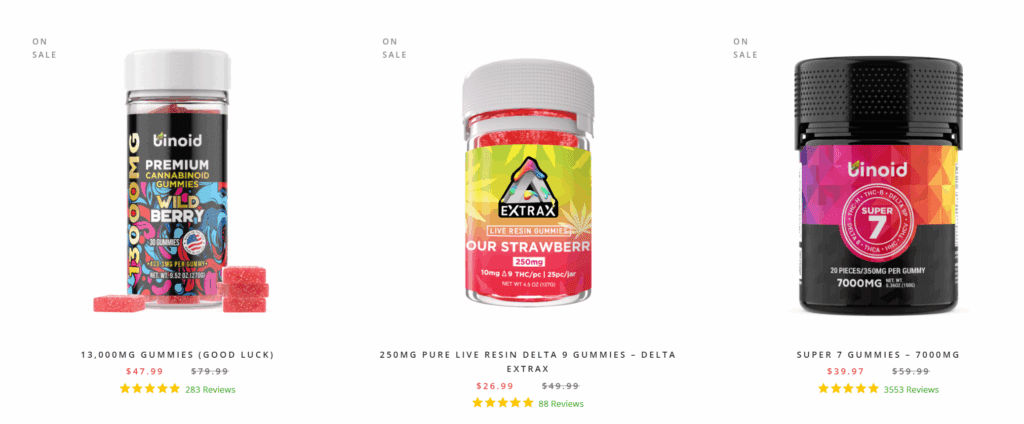
Contender #2: Pre-Packaged Gummies
Stepping onto the scene as a vibrant and polished counterpart to raw flower, pre-packaged gummies represent the pinnacle of convenience, precision, and accessibility in the world of wellness. These delightful, flavorful edibles have revolutionized how people approach active ingredients, transforming what was once a complex or intimidating process into an act as simple as enjoying a piece of candy. Pre-packaged gummies are the embodiment of modern food science and manufacturing, designed from the ground up to deliver a consistent, predictable, and enjoyable experience every single time.
Their appeal is broad and undeniable, attracting everyone from wellness enthusiasts looking for a tasty way to take their vitamins to individuals seeking the long-lasting effects of cannabinoids without the need for inhalation. With their discreet nature, precise dosing, and an ever-expanding universe of formulations, gummies have firmly established themselves as a dominant force in the market, offering a streamlined and user-friendly gateway to a world of botanical and supplemental ingredients.
At their most basic level, pre-packaged gummies are a type of edible confectionary, but their true identity lies in what they contain. They are a delivery system, a vehicle designed to carry a specific active ingredient in a precisely measured dose. The gummy itself is typically made from a base of either gelatin (an animal-derived protein) or pectin (a plant-based alternative, making them suitable for vegans), which gives them their signature chewy texture.
This base is then combined with water, sweeteners like sugar, corn syrup, or natural fruit juices, as well as natural or artificial flavorings and colorings to create a tasty final product. The “pre-packaged” aspect is key to their function and appeal. This means they are manufactured in controlled environments, dosed with precision by machinery, tested for quality and potency, and then sealed in professional, often child-resistant, packaging to ensure freshness, safety, and shelf-stability. This entire process removes guesswork and variability, offering the consumer a reliable and replicable product.
The creation of a high-quality wellness gummy is a fascinating and precise manufacturing process that blends culinary arts with pharmaceutical-grade accuracy. It is a multi-step journey that ensures every single gummy in a batch not only tastes great but also contains the exact amount of the active ingredient advertised on the label. This consistency is the cornerstone of the gummy’s value proposition. From the initial mixing of ingredients to the final sealing of the package, each stage is carefully controlled and monitored to produce a safe, effective, and reliable product for the end consumer:
Ingredient Kitchen and Slurry Preparation: The process begins in a large-scale commercial kitchen. The foundational ingredients for the gummy base—purified water, sweeteners, and the gelling agent (pectin or gelatin)—are measured and combined in large, jacketed kettles. These kettles heat the mixture to a very specific temperature, cooking it to the perfect consistency and water content. This hot, liquid mixture is referred to as a slurry. At this stage, flavorings and colorings are also added to the batch.
Homogenization and Active Ingredient Infusion: This is the most critical step for ensuring accurate dosing. The pre-measured active ingredient—whether it’s a cannabinoid distillate, a vitamin powder, or a botanical extract—is introduced into the hot slurry. The mixture is then subjected to a process called homogenization, where it is intensely blended under high shear. This ensures that the active ingredient is perfectly and evenly distributed throughout the entire batch of slurry, eliminating the risk of “hot spots” where some gummies could be more potent than others.
Molding and Depositing: Once the infused slurry is perfectly homogenized, it is transferred to a depositor machine. This machine works with incredible precision, pumping the exact same amount of the liquid slurry into thousands of molds lined up on a production line. These molds are often made of silicone or starch and can be in any number of shapes, from classic bears and cubes to custom branded designs.
Controlled Cooling and Setting: After being filled, the trays of molds are moved into a controlled cooling environment, often a long cooling tunnel. Over a period of several hours, the gummies are slowly brought down to room temperature. This gradual cooling process allows the gelatin or pectin to properly set, giving the gummies their firm, chewy texture and locking them into their molded shape.
Demolding, Finishing, and Curing: Once fully set, the gummies are automatically removed from their molds. At this point, they may go through a finishing step. This often involves tumbling them in a light coating of sugar or a sour citric acid powder, which not only adds an extra burst of flavor but also prevents the gummies from sticking together in the packaging. Some gummies may then be placed on drying racks to cure for a day or two to achieve the perfect final texture.
Third-Party Lab Testing for Quality Assurance: Before packaging, a crucial quality control step takes place. Representative samples from the finished batch are sent to an independent, third-party laboratory. This lab conducts a battery of tests to verify the product’s potency, ensuring that each gummy contains the advertised dose of the active ingredient. They also test for purity, screening for any potential contaminants such as heavy metals, pesticides, or residual solvents to guarantee the product is safe for consumption.
Automated Counting and Packaging: After passing quality assurance tests, the finished gummies are moved to the packaging line. High-speed automated machines count the precise number of gummies for each container. They are then dispensed into bottles or pouches, which are immediately sealed to lock in freshness and protect the product from oxygen and moisture. The packaging is often designed to be child-resistant and is labeled with all necessary information, including dosage, ingredients, and batch numbers for traceability.
Recommended products
The sheer variety of pre-packaged gummies available on the market today is nothing short of astounding, a testament to the format’s incredible versatility and mass appeal. The gummy has evolved from a simple confection into a sophisticated and highly adaptable delivery system for an enormous array of active ingredients, extending far beyond the realm of cannabinoids. This explosion of innovation allows consumers to select products that are highly targeted to their specific wellness goals, daily routines, personal curiosities, and dietary preferences.
Whether the aim is to support foundational nutritional needs, enhance a fitness regimen, explore the calming properties of exotic botanicals, or simply unwind at the end of a long day, there is almost certainly a gummy formulation crafted for that exact purpose. This diversity transforms the act of supplementation from a chore into a moment of enjoyable, flavorful self-care:
Gummies Made with Vitamins, Minerals, and Amino Acids: This category represents the most mainstream and widely embraced application of gummy technology in the wellness space. It was born from a widespread phenomenon known as “pill fatigue,” where many individuals, both children and adults, grow tired of the clinical and often unpleasant experience of swallowing multiple pills or capsules each day. Gummies brilliantly solve this problem by transforming daily supplementation into a delightful, treat-like ritual. They have become an exceptionally popular alternative for delivering foundational nutrients in a palatable and easy-to-digest format. You can readily find gummies formulated with single, targeted ingredients, such as potent Vitamin C gummies, which are packed with antioxidants to support a robust immune system. Vitamin D gummies are another staple, offering a convenient way to supplement the “sunshine vitamin,” crucial for bone health, mood regulation, and immune function. For those needing an energy lift, Iron gummies can help support healthy red blood cell production and oxygen transport. Beyond single-ingredient options, comprehensive multivitamin gummies offer a broad spectrum of essential nutrients tailored for different demographics, including specific formulas for men, women, and children. The mineral category is also well-represented, with options like Zinc for cellular repair and immune support, and Magnesium Glycinate or Citrate gummies, widely sought after for their role in promoting muscle relaxation, supporting nerve function, and contributing to a restful night’s sleep. Furthermore, amino acids have found their way into these formulations; L-Theanine gummies, derived from the same compound found in green tea, are popular for their ability to promote a state of “calm alertness” by supporting alpha brain wave activity, while L-Citrulline gummies are used to enhance circulation by acting as a precursor to nitric oxide.
Gummies with the Addition of Other Ingredients: Where the gummy format truly shines is in its capacity for creating complex, synergistic formulas where multiple ingredients are “stacked” together to achieve a specific, targeted outcome. Manufacturers have become adept at creating these functional blends, providing a multi-pronged approach to common wellness goals that is often more effective than any single ingredient on its own. The quintessential example is the modern “sleep gummy.” A typical formulation might start with a calming cannabinoid base like CBD or, more commonly, CBN, which is known for its profoundly relaxing properties. To this base, they will add a precise dose of melatonin, the body’s own hormone for regulating the sleep-wake cycle. The formula is often further enhanced with the amino acid L-Theanine to quiet the mind, and a blend of traditional herbal botanicals like chamomile, passionflower, and lemon balm, all of which have a long history of use for promoting tranquility. Similarly, “energy” gummies are designed to provide a smooth, sustained boost without the jitters of a triple-shot espresso. These often combine a measured dose of caffeine with a full spectrum of B-vitamins (like B6 and B12), which are essential for the body’s process of converting food into usable energy. To elevate the formula beyond a simple physical boost, many energy gummies also include nootropic ingredients, such as L-Tyrosine to support focus under stress or Lion’s Mane mushroom extract to promote cognitive clarity.
Pre-Workout Gummies: Designed specifically with the fitness community and athletes in mind, pre-workout gummies offer a remarkably convenient and efficient way to fuel up before a demanding workout. They serve as a direct and often more palatable alternative to traditional powdered pre-workout drinks, eliminating the need for shaker bottles, messy mixing, and chugging large volumes of liquid right before physical exertion. These formulations contain concentrated doses of scientifically-backed, performance-enhancing ingredients. A key component is often Beta-Alanine, an amino acid that works by increasing carnosine levels within muscle tissue, effectively buffering the build-up of lactic acid. This process helps to delay the onset of muscle fatigue, allowing for more repetitions and greater endurance during high-intensity exercise. Another cornerstone ingredient is Citrulline Malate, which dramatically boosts the body’s production of nitric oxide. This leads to vasodilation, or the widening of blood vessels, which improves blood flow, enhances the coveted muscle “pump,” and facilitates more efficient delivery of oxygen and nutrients to working muscles. Naturally, a controlled dose of caffeine is almost always included for its well-documented ability to increase energy, sharpen focus, and reduce the perception of effort, making tough workouts feel more manageable.
Cannabinoid-Infused Gummies: This is arguably the most dynamic and rapidly expanding category in the entire wellness gummy landscape. These products are infused with a diverse array of cannabinoid extracts derived from the hemp plant, each possessing its own unique set of properties and potential effects on the body’s ECS. The category is broadly split between non-intoxicating and intoxicating options. Among the non-intoxicating cannabinoids, CBD (Cannabidiol) reigns supreme as the foundational wellness ingredient, celebrated for its role in promoting a sense of balance and calm. CBG (Cannabigerol), often called the “mother of all cannabinoids,” is gaining traction for its soothing properties, while CBN (Cannabinol) has carved out a niche as the go-to cannabinoid for sleep-focused formulas due to its powerfully sedative qualities. On the intoxicating side, the options are even more varied. Delta 8 THC offers a milder, clearer sense of euphoria, often preferred by those who find traditional THC too intense. Hemp-derived Delta 9 THC gummies provide the classic, potent effects cannabis is known for, cleverly formulated to remain federally compliant under the 2018 Farm Bill’s 0.3% by dry weight limit. Beyond these, a new wave of novel cannabinoids has emerged. THCA gummies can contain the cannabinoid in its raw, non-intoxicating state or have it decarboxylated into Delta 9 THC during production. THCV is sought after for its uniquely stimulating and energetic effects, while THC-P is noted for its extraordinary potency, binding to cannabinoid receptors with significantly higher affinity than Delta 9 THC. Finally, HHC offers an experience very similar to Delta 9 THC but in a hydrogenated form that boasts superior stability against heat and UV degradation.
Strain-Infused Gummies: Representing the next evolution in cannabinoid edibles, strain-infused gummies are designed to bridge the experiential gap between the precision of an edible and the nuanced, connoisseur-level experience of consuming flower. These advanced products are infused not just with a cannabinoid like Delta 9 THC, but also with a carefully curated blend of botanically-derived terpenes. Terpenes are the aromatic compounds responsible for the distinct scents and flavors of ifferent plants, and in cannabis, they are believed to work synergistically with cannabinoids to steer the effects of a particular strain—a concept known as the “entourage effect”. By reintroducing specific terpene profiles into the gummy formula, manufacturers can mimic the effects of legendary cannabis strains. For example, a “Sour Diesel” Sativa-style gummy might be infused with limonene and pinene to replicate that strain’s famously energetic, uplifting, and focused character, often paired with a sharp, citrusy flavor. Conversely, a “Granddaddy Purple” Indica-style gummy would likely feature a blend of myrcene and linalool to encourage the deep, full-body relaxation the strain is known for, complemented by a sweet, berry-like taste. This approach moves beyond simple Indica/Sativa/Hybrid labels to offer a more sophisticated, flavor-forward, and effects-driven experience.
Mushroom-Infused Gummies: The fascinating world of fungi has made a dramatic entrance into the gummy space, creating a category that is incredibly diverse and requires careful distinction. The most common and widely accessible type is the functional mushroom gummy. These are non-psychoactive and are considered adaptogens or nootropics, used for daily wellness support. Popular varieties include Lion’s Mane for supporting cognitive function and focus; Reishi, the “mushroom of immortality,” for promoting relaxation; Cordyceps for supporting energy and stamina; and Chaga and Turkey Tail for their high antioxidant content and immune-supportive properties. A separate, more exotic category is the Amanita mushroom gummy (containing Amanita muscaria or pantherina). It is crucial to understand that these do NOT contain psilocybin. Their effects come from the compound muscimol, which provides a unique and legal psychoactive experience that is more dissociative and dream-like than classically psychedelic. Users often report altered perceptions of time and size, and it is imperative to use a trusted, professionally prepared source. Finally, “magic mushroom” gummies, which are infused with psilocybin, do exist. However, they are federally illegal in the United States as a Schedule I substance and are only available in a few decriminalized localities or through illicit channels. These gummies offer the well-known classic psychedelic experience, including profound shifts in thought and visual hallucinations.
Kratom-Infused Gummies: Kratom is a tropical evergreen tree from Southeast Asia whose leaves contain potent alkaloids, primarily Mitragynine and 7-hydroxymitragynine. Kratom gummies provide a simple, palatable, and dose-controlled method for consuming this botanical, which is known for its distinctly dose-dependent effects. At lower doses, Kratom typically produces stimulating, energizing effects, often compared to a strong cup of coffee that enhances focus and sociability. At higher doses, its effects shift dramatically, becoming much more sedating and relaxing, leading to feelings of calming euphoria. Gummies are often formulated to reflect the different “vein” colors of Kratom leaves—Red Vein (most relaxing), White Vein (most energizing), and Green Vein (a balance of both). It is important to note that Kratom’s legal status is complex and varies widely, as it is unregulated federally but banned for human consumption in several states and cities.
Kava-Infused Gummies: Kava, or Piper methysticum, is a plant native to the Pacific Islands with a deep cultural history as a ceremonial beverage used to promote social bonding and relaxation. Its calming effects are derived from active compounds called kavalactones. Kava-infused gummies have made this traditional plant far more accessible to a modern audience, encapsulating its unique properties in a simple, tasty format. The kavalactones are known to interact with the body’s GABA receptors, promoting a sense of mental calm, easing everyday tensions, and relaxing muscles without causing significant cognitive impairment. Many users describe the experience as a “social lubricant” that fosters conversation and a feeling of well-being, making it a popular choice for those looking to unwind without consuming alcohol. A hallmark of quality Kava is its ability to cause a mild, temporary numbing sensation in the mouth, a direct effect of the potent kavalactones.
The overall effects of pre-packaged gummies are dictated entirely by their journey through the digestive system, a biological pathway that defines their characteristically slow onset and extended duration. After a gummy is consumed, it is first broken down by stomach acids and then moves to the small intestine, where its active ingredients are absorbed into the bloodstream and sent directly to the liver. It is here that the critical process of first-pass metabolism occurs. In the liver, a host of enzymes (from the Cytochrome P450 family) go to work on the compounds. In the case of Delta 9 THC, for example, it is converted into a more potent and longer-lasting metabolite called 11-hydroxy-THC.
It is this powerful metabolite that is largely responsible for the profound and body-focused experience of edibles. This entire journey—from ingestion to digestion, absorption, metabolization, and finally circulation to the brain—is what causes the significant delay. However, it is also what creates the slow, steady, and enveloping wave of sensation that can last for many hours, providing a sustained experience that is impossible to achieve through any other method of consumption.
Pros & Cons
The modern convenience and scientific precision of pre-packaged gummies offer a wealth of advantages, but they also come with certain trade-offs. Evaluating these pros and cons is crucial for determining whether this popular format aligns with your personal wellness philosophy and practical needs. Their strengths lie in their ease of use and reliability, while their weaknesses are often related to their indirect method of delivery and formulation.
Pros:
Precise and Consistent Dosing: The single greatest advantage of gummies is the guarantee of a precise and consistent dose in every single piece. Through meticulous manufacturing and testing processes, a 10mg gummy will reliably deliver 10mg of the active ingredient. This removes all guesswork, allowing users to have a completely predictable and repeatable experience, which is invaluable for both newcomers and those using them for specific wellness routines.
Discreet and Convenient: Gummies are the epitome of discreet consumption. They look, smell, and taste like ordinary candy, allowing them to be carried and consumed almost anywhere without any odor or paraphernalia. This makes them the perfect choice for travel, social events, or any situation requiring subtlety.
No Inhalation Required: A great alternative for those who want to avoid smoking or vaping, gummies provide a powerful and effective experience that completely bypasses the respiratory system. This makes the benefits of various botanical compounds accessible to a much wider audience who would otherwise not be able to partake.
Long-Lasting Effects: The effects from ingestion last much longer than from inhalation. A single dose can provide a sustained experience for many hours, which is ideal for those seeking prolonged enjoyment without the need to re-dose frequently. This makes them perfect for a lazy weekend afternoon, a long movie, or a full night of restful sleep.
Pleasant Taste and Flavor: Gummies masterfully mask the earthy taste of plant extracts with enjoyable candy flavors. The wide variety of fruit flavors available makes taking a daily supplement or cannabinoid feel like a treat rather than a chore. This high level of palatability is a major draw for many consumers.
Wide Variety of Formulations: The gummy platform is incredibly versatile, allowing for a nearly endless variety of formulations to suit specific needs. Whether you are looking for a simple CBD gummy, a complex blend for sleep support with CBN and melatonin, or a pre-workout gummy with caffeine and amino acids, there is a product specifically designed for that purpose.
Shelf-Stable and Easy to Store: Pre-packaged gummies are formulated and sealed in airtight containers to ensure a long and stable shelf life. Unlike fresh flower, which can dry out and lose its potency over time if not stored properly, gummies maintain their freshness and effectiveness for many months. This makes them easy to store and convenient to buy in larger quantities.
A More Controlled Experience: The predictable dose and slow onset of gummies can lead to a more manageable experience, which is particularly beneficial for individuals new to intoxicating compounds. Rather than a rapid rush, the effects gently build over time, which can feel more comfortable and easier to navigate for many users.
Socially Accessible: Gummies are often seen as more approachable and less intimidating than flower. The familiar form of a candy helps to lower the barrier to entry for people who are curious about cannabinoids or other botanicals but might be put off by the idea of smoking or vaping.
Ingredient Stacking: The ability to combine multiple beneficial ingredients in one product is a unique advantage of formulated edibles like gummies. This concept of “ingredient stacking” allows for the creation of synergistic formulas where different compounds work together to enhance a desired effect, such as combining CBD and melatonin for a more effective sleep support product.
Cons:
Delayed Onset of Effects: The long and sometimes unpredictable wait time for the effects of a gummy to begin can be a significant drawback. This delay can make it difficult for new users to gauge the right dose, and it is the primary cause of accidental overconsumption when an impatient user takes a second dose before the first has kicked in.
Presence of Additives: In order to achieve their candy-like taste and texture, gummies necessarily contain additional ingredients that some users may wish to avoid. This almost always includes some form of sugar or corn syrup, as well as artificial or natural colors and flavorings. This can be a con for individuals on low-sugar diets or those who prefer to avoid processed additives.
Potential for Overconsumption: The delicious, candy-like nature of gummies, combined with their delayed onset, can create a risk for overconsumption. It can be tempting to eat more than one, especially for those new to edibles. It is crucial to store them safely and securely, away from children, pets, or unsuspecting adults.
Less Control Over Immediate Effects: Once a gummy has been consumed, the user is committed to the full ride. Unlike inhalation, where one can stop after a single puff to assess the effects, an edible’s journey cannot be halted or easily adjusted once it has begun. If the dose turns out to be too strong, the only course of action is to wait for the long-lasting effects to subside.
How to Go About Choosing Which Option
The journey to choosing between THCA flower and a wellness-intended gummy is not about finding a universally “better” product, but about discovering the product that is unequivocally better for you. This decision is a deeply personal one, guided by the unique contours of your lifestyle, your desired outcomes, and your individual preferences. By reflecting on the fundamental differences in experience—the rapid ritual of flower versus the slow, simple convenience of a gummy—you can begin to map out which path aligns more closely with your needs. Consider the context in which you’ll be using the product, the speed and duration of the effects you’re seeking, and your personal philosophy on natural versus formulated products. This self-assessment is the key to making a choice that feels both satisfying and perfectly suited to your life.
To further clarify this choice, let’s break down the decision-making process into several key lifestyle and preference factors. By considering where you stand on each of these points, the right option will likely become much clearer:
Speed vs. Endurance (Onset and Duration): The most critical question to ask yourself is: “When do I want to feel the effects, and how long do I want them to last?” If you are seeking immediate feedback and an experience that you can control in real-time, perhaps for a short relaxation session after work, the rapid onset of inhaled THCA flower is unmatched. Conversely, if your goal is to have a sustained, long-lasting experience that carries you through an entire evening or helps you stay relaxed for hours on end, the slow-release, marathon-like effects of a gummy are far more suitable.
Ritual vs. Convenience (Lifestyle and Discretion): How does this product need to fit into your daily life? Do you cherish the idea of a hands-on ritual—the grinding of aromatic flower, the packing of a bowl—and have a private, comfortable space to enjoy it? If so, the tactile and sensory experience of THCA flower will be deeply rewarding. However, if your life demands discretion, portability, and the ability to consume a product without any fuss, odor, or paraphernalia, then the grab-and-go simplicity of a pre-packaged gummy is the undeniable winner.
Purist vs. Pragmatist (Ingredient Philosophy): What is your stance on ingredients? If you are a purist who values consuming products in their most natural, unprocessed state, then single-ingredient THCA flower is the clear choice. It offers a direct connection to the plant without any additives. If you are more of a pragmatist who values a pleasant taste, ease of use, and is comfortable with formulated products containing sugars and flavorings to achieve a specific goal, then a gummy will meet your needs perfectly.
Titration vs. Precision (Dosing Preference): How do you prefer to manage your dose? Do you like the idea of starting small and “titrating” your dose by taking one puff at a time until you reach your desired level of effect? This in-the-moment control is the hallmark of consuming flower. Or, do you prefer the set-it-and-forget-it confidence of a precisely measured dose, knowing that one gummy will deliver the exact same experience every time? This reliability and predictability is the core strength of a well-made edible.
Sensory Experience: What role does taste and smell play in your enjoyment? If you are a connoisseur who loves exploring the complex, earthy, and citrusy aromas and flavors of different botanical strains, the terpene-rich experience of vaping or smoking high-quality flower will be a delight. If you find the natural taste of hemp to be unappealing and would much rather enjoy a burst of fruity flavor, then the deliciousness of a gummy is a significant advantage.
|
Feature |
THCA Flower |
Pre-Packaged Gummies |
|---|---|---|
|
Primary Active Form |
THCA (converts to Delta 9 THC with heat) |
Varies (CBD, Delta 9 THC, Vitamins, Melatonin, etc.) |
|
Onset Time |
Fast (2-10 minutes) via inhalation |
Slow (30-120+ minutes) via ingestion |
|
Duration of Effects |
Shorter (1-3 hours) |
Longer (4-8+ hours) |
|
Dosing |
Difficult to measure precisely; easy to titrate |
Precise and consistent per piece; hard to titrate |
|
Discretion |
Low; produces noticeable odor and requires gear |
High; looks and smells like candy, no gear needed |
|
Convenience |
Lower; requires preparation (grinding, packing) |
Highest; ready to consume straight from the package |
|
Experience |
Ritualistic, sensory, rapid feedback |
Simple, convenient, slow and steady build |
|
Ingredients |
Single-ingredient (plant) |
Formulated (additives, sugars, flavorings) |
|
Flavor Profile |
Natural, earthy, strain-dependent (terpenes) |
Sweet, fruity, candy-like |
|
Best For |
Connoisseurs, those wanting fast effects & control |
Those needing discretion, long duration, & precise doses |
The Final Petal, The Last Bite
In the end, the dialogue between the raw, aromatic petal of a THCA flower and the final, flavorful bite of a gummy is not a contest to be won, but a spectrum of experiences to be understood. One represents a philosophy of direct engagement with nature, embracing the beautiful imperfections and complex character of a plant cultivated from the earth. It asks for participation, a ritual that connects the user to an ancient tradition of botanical appreciation.
The other champions a philosophy of modern innovation, harnessing science to refine nature’s offerings into a product of unparalleled consistency, convenience, and accessibility. It asks for trust in a process that delivers a predictable outcome, seamlessly integrated into the fast pace of contemporary life. Choosing between them is an act of self-awareness, a declaration of what you value most in a given moment: the journey or the destination, the ritual or the result, the wild garden or the polished gem.

